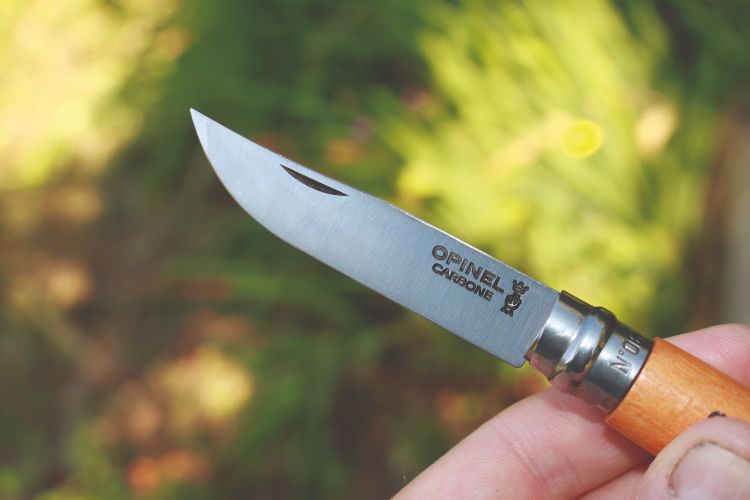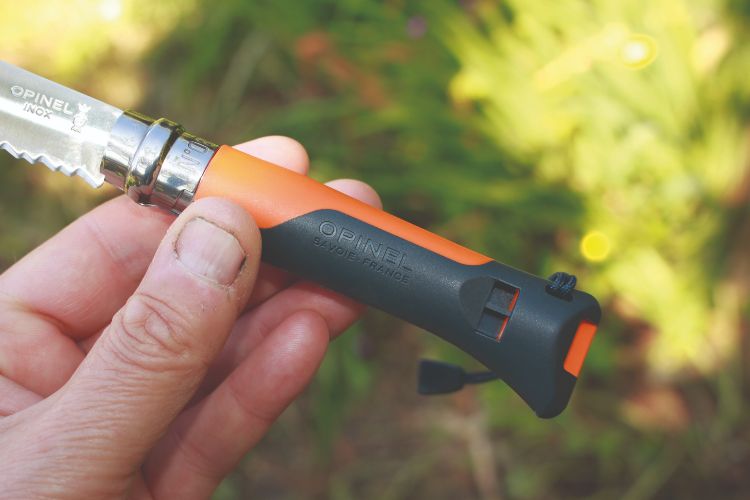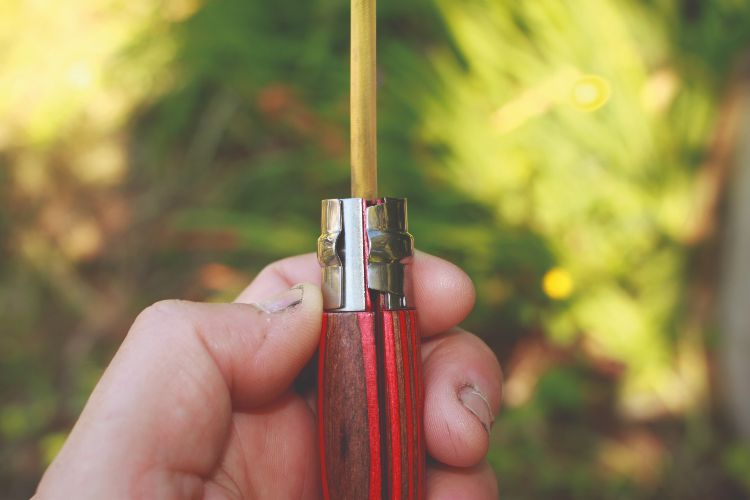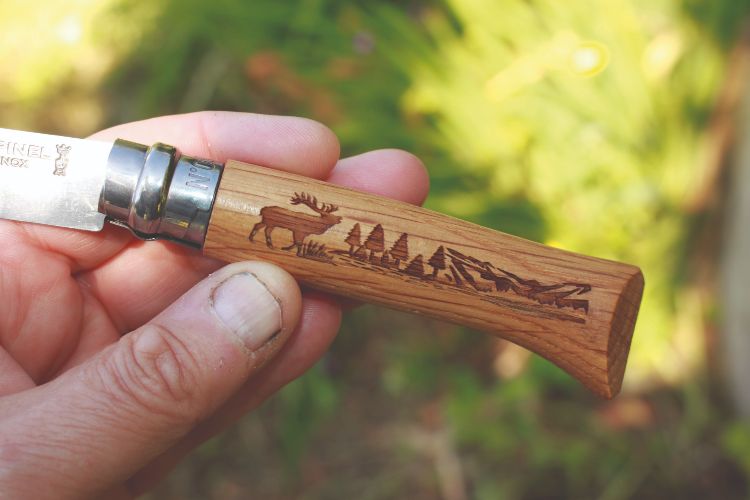Growing up on a farm and living in the countryside meant that carrying a pocket knife was just an ordinary part of my life. Nowadays, to carry a knife you need a good reason and working out in fields still gives me that, for field preparation of shot quarry.
With the rough and tumble of field work comes the possibility of losing a knife, which given the price of some could make that hunting trip a costly experience. Over the last couple of months, I’ve bought a few knives that offer good solid performance, without breaking the bank. All these come from French maker, Opinel, and such is their popularity that it seems they are available just about everywhere.
 Long History
Long History
The Opinel story starts with an 18-year-old Joseph Opinel, who worked in his father’s blacksmith business in Savoie. He designed a pocket knife primarily designed for use by farmers in the region, and by 1897, he had developed a series of 12 different sizes.
These knives were designed from No.01 to No.12, with a No.13 to join later; the No 1 and 11 were dropped from the line-up in 1935. Due to its useful size, it was the No.8 that became the most popular, and still to this day Opinel sales are mostly of this particular knife.
For the whole of the company’s history, it has been family run, Francois Opinel being the current president. These knives are certainly not waning in popularity and the factory produces 6.5 million products per year.
In 1985, the prestigious Victoria and Albert museum hosted an exhibition of the 100 most beautiful products in the world, and the Opinel knife was one of the exhibits. On the subject of museums, there is a dedicated facility at the factory, so if you find yourself in the area, it could make a fascinating couple of hours.
I have a No.6 and a few No.8 models in hand, so let’s have an in-depth look and see what makes these knives so popular.
 No.8
No.8
The ‘standard’ Opinel No.8 comes with an XC90 carbon steel blade, which is 8.5cm in length. This XC90 grade steel is very hard-wearing, and easy to resharpen, but despite these qualities, it is important to give it a regular cleaning with some oil because it will be prone to corrosion.
The blade profile is described as ‘Yatagan’, similar in attenuated form to a short sword used in the Ottoman empire in the 19th century. This profile affords the blade strength, when used under pressure.
At the base of the blade is the registered trade mark of the crowned hand, which has been in use since 1909. In 1565, King Charles IX ordered that all master cutlers used an emblem to advise of the quality and origin of their product. Opinel chose the hand as the blessing hand of John the Baptist, taken from the coat of arms of St Jean de Maurice, the nearest town in Albiez-le-Vieux. The crown was added to signify that Savoie was a duchy. A nail nick is cut into the blade, to aid opening, and the blade itself held in place by a concealed rivet.
 Twist Lock
Twist Lock
Opinel have developed their own twist on a blade-locking device, which is a patented design called the ‘Virobloc’. This was invented by Marcel Opinel in 1955, and consists of a fixed, inner stainless steel ring, covered by an external rotating ring, which when manually rotated, blocks the blade. This means that the blade can be locked in the open or closed position – a simple yet very effective design. To complete the package, the handle is formed from a single piece of hard-wearing beech, with 45-degree angles cut at its end.
With an overall closed length of 110mm and weight of 45g, the No.8 sits well in the pocket, and supplied from the factory with a very keen edge, this little wonder has proved its worth over several months of testing farmyard duties.
 Something A Bit Different
Something A Bit Different
So far, we’ve considered the standard No.8, but as you would imagine from a knife so popular, it has spawned a few variations, which are just as hardworking, but offer a little more style. There are a number of handle variations made from differing woods, two examples of which I have before me.
The first is beech, which has laser-cut engraving, denoting deer, although there are other scenes available including dogs, and fish. These would make a perfect gift depending on individual interests.
My other wood-handled knife comes from the luxury range and is constructed of birchwood laminated in red; other colours, including browns and greys are available. Anyone with an HW110 laminate stock will appreciate the grey one because it matches very well and as they’re from the luxury range, they come in a gift box with a certificate.
If you want something very different, why not try the No.8 outdoor sport model? This knife has a blade made from high-carbon stainless steel, with a half-serrated blade, and a large blade cut-out designed to unscrew ‘D’ shackles.
Instead of wood, the handle is high visibility orange and grey plastic, with a short lanyard and the rear of the handle is hollow, so it can be used as a 110dB whistle if you should get into trouble. It could be the perfect companion for a mountain walk.
All these knives offer exceptional quality and value for money, making a perfect gift for the airgun hunter, or anyone who appreciates the outdoors.
With thanks to Lampeter Shooting Sports and Neath Gun Shop for the supply of Opinel knives.
 Products Reviewed
Products Reviewed
- Opinel No.8 Knife beech handle £7.99
- Opinel No.8 Engraved beech handle £15.99
- Opinel No.8 Laminated birch £23.50
- Opinel No.8 Outdoor sport £23.00